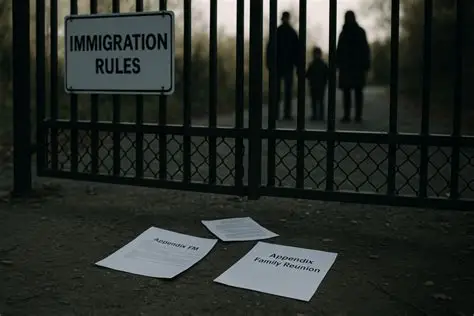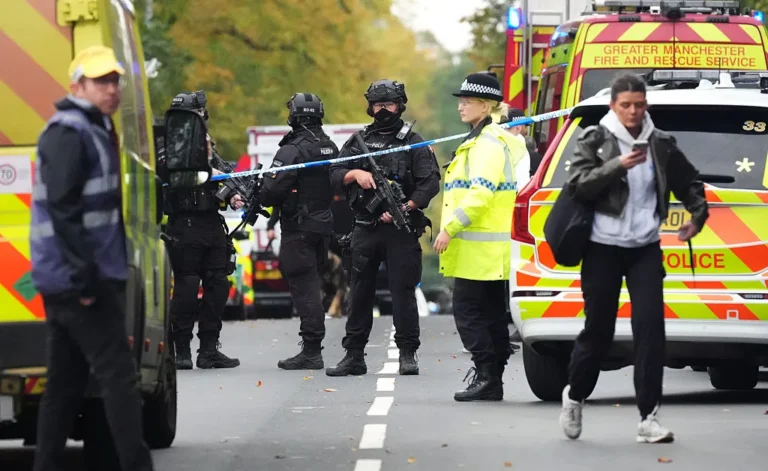
On 4 September 2025, the UK Home Office laid before Parliament a Statement of Changes to the Immigration Rules, known as HC 1298 Explanatory Memorandum, accompanied by an Explanatory Memorandum. GOV.UK+1 These changes make significant amendments to the rules governing family reunion, protection status, and dependent applications. In this article, we break down what HC 1298 is, what changes it introduces, their policy rationale, practical impact, and potential challenges.
What Is HC 1298 & Its Context
-
HC 1298 is a legislative instrument that amends the UK’s Immigration Rules under powers derived from the Immigration Act 1971. GOV.UK+2GOV.UK+2
-
The Explanatory Memorandum is intended for Parliamentary oversight, including the Joint Committee on Statutory Instruments and the Secondary Legislation Scrutiny Committee. GOV.UK+1
-
The changes under HC 1298 take effect at 15:00 BST on 4 September 2025. GOV.UK+2GOV.UK+2
These amendments come during a period of broader upheaval in UK immigration policy, especially relating to asylum, family migration, and the pressure on public services.

Key Changes Introduced by HC 1298
One of the most significant and controversial changes is the temporary suspension of new applications under Appendix FRP (Family Reunion for “Sponsors with Protection”) — also known as the refugee family reunion route. Morgan Smith Immigration+4GOV.UK+4GOV.UK+4
-
The Explanatory Memorandum explains the route is being paused to address pressure on public services and local authorities, stemming from the claims that sponsors under the FRP option were not always required to demonstrate sufficient means or accommodation before family arrival. GOV.UK+3GOV.UK+3GOV.UK+3
-
Applications submitted before 15:00 on 4 September 2025 will still be processed under the old rules. Morgan Smith Immigration+3GOV.UK+3GOV.UK+3
2. Amendments to Appendix FM
To mitigate the effects of suspending the FRP route, HC 1298 also makes significant modifications to Appendix FM (Family Members), so that partners and dependent children of persons with protection status can now apply under Appendix FM. Free Movement+4GOV.UK+4GOV.UK+4
Key changes include:
-
Removal of prior restrictions that refugees or stateless people could only use Appendix FM if they could not apply under FRP. With FRP suspended, that condition is being dropped. GOV.UK+2GOV.UK+2
-
The rules are adjusted so that parents with protection status can sponsor their dependent children. Previously, the option was more constrained. GOV.UK+3GOV.UK+3GOV.UK+3
-
A new “sole responsibility” requirement is introduced: for a child applying under Appendix FM, the sponsoring parent generally needs to show sole responsibility if the child is not joining both parents in the UK. However, if sole responsibility cannot be shown, cases may still succeed in “serious and compelling” circumstances. City Legal Solicitors+3GOV.UK+3GOV.UK+3
3. Transitional & Legal Provisions
-
The changes will be consolidated into the general Immigration Rules after implementation. GOV.UK+1
-
A statutory review clause is included: the Home Secretary must review these Rules and their operation, and produce reports at five-year intervals. GOV.UK+2GOV.UK+2
-
Because of urgency and to prevent a surge of new applications just before implementation, the government breached the usual 21-day convention for implementing changes to Appendices FRP and FM. GOV.UK+2GOV.UK+2
Policy Reasoning & Justifications
-
Pressure on Public Services / Local Authorities
The government argues that the FRP route, under its historic terms, placed disproportionate burdens on local services (accommodation, welfare, social care) because sponsors often entered with minimal financial checks. GOV.UK+2GOV.UK+2 -
Need for a More Balanced and Sustainable Family Migration System
The policy aim is to bring “greater fairness” and consistency to family migration rules, so that refugee family routes are more aligned with family migration for British citizens or settled persons. GOV.UK+3GOV.UK+3GOV.UK+3 -
Prevention of “Surge” Behavior & System Overload
The government contended that delaying implementation would cause a flood of new applications just before rules changed, weakening administrative capacity. Hence the immediate implementation. GOV.UK+2GOV.UK+2 -
Legal & Human Rights Considerations
The changes attempt to remain compatible with obligations under Article 8 of the European Convention on Human Rights (ECHR). The memorandum notes that the negative resolution procedure is being used (so no primary legislation is altered). GOV.UK+1
Practical Impacts & Criticism
-
For individuals hoping to reunite with family under the protection (refugee) route, new applications are now closed — meaning many must now use the stricter Appendix FM route. City Legal Solicitors+3Free Movement+3Morgan Smith Immigration+3
-
Because Appendix FM has more rigorous requirements (e.g., financial, English language, sole responsibility for children), many applicants may find the new route more challenging. GOV.UK+3Free Movement+3City Legal Solicitors+3
-
Human rights and advocacy groups have strongly criticized the suspension of the FRP route. For example, Law Centre NI described it as “deeply unjust,” warning that it pushes vulnerable people toward dangerous routes and traffickers. Law Centre Northern Ireland
-
Because many refugee family reunion applications involve children and women, critics argue the changes disproportionately impact the most vulnerable. Law Centre Northern Ireland+1
Administrative & Legal Challenges
-
The removal of the 21-day convention raises concerns about parliamentary oversight and adequacy of time for legal challenge or public awareness.
-
The reliance on “serious and compelling” exceptions to allow child applications where sole responsibility cannot be shown may lead to inconsistent decision-making or appeal litigation.
-
The lack of prior public consultation for these specific changes is flagged in the memorandum; the government justifies this on the grounds of urgency.
What to Watch & Next Steps
-
The government has promised to deliver a new family migration policy before the end of 2025, intended to cover all categories — citizens, settled persons, and those on work or protection routes. GOV.UK+3Free Movement+3City Legal Solicitors+3
-
The reviews mandated every five years will offer an opportunity for adjustment or reversal, but until then these changes remain operative. GOV.UK+1
-
Those with pending FRP applications submitted before the deadline must monitor their cases closely to ensure they are processed under the old rules.
-
For families affected by the changes, legal advice and representation will be crucial in navigating the new Appendix FM route, especially in child sponsorship cases with “sole responsibility” issues.
Conclusion
HC 1298 Explanatory Memorandum and its accompanying Explanatory Memorandum mark a significant shift in the UK’s approach to family migration in refugee/protection cases. By suspending the refugee family reunion route and integrating some of its functions into a revised Appendix FM — complete with stricter criteria — the government aims to reduce pressure on public services and create a more sustainable system. However, the immediate impact on vulnerable families, children, and international protection obligations raises serious ethical, legal, and practical questions.






